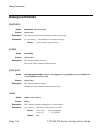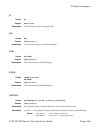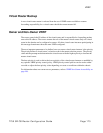
VRRP Overview
Page 170 7750 SR OS Router Configuration Guide
VRRP Overview
The Virtual Router Redundancy Protocol (VRRP) is defined in the IETF RFC 2338, Virtual Router
Redundancy Protocol, and further described in draft-ietf-vrrp-spec-v2-06.txt. VRRP describes a
method of implementing a redundant IP interface shared between two or more routers on a
common LAN segment, allowing a group of routers to function as one virtual router. When this IP
interface is specified as a default gateway on hosts directly attached to this LAN, the routers
sharing the IP interface prevent a single point of failure by limiting access to this gateway address.
VRRP can be implemented on IES service interfaces and on core network IP interfaces.
If the master virtual router fails, the backup router configured with the highest acceptable priority
becomes the master virtual router. The new master router assumes the normal packet forwarding
for the local hosts.
Figure 13 displays an example of a VRRP configuration.
Figure 13: VRRP Configuration
OSRG006
Non-Owner
ALA-3
vrld 100
Priority 150
Owner
ALA-2
vrld 100
Non-Owner
ALA-1
vrld 100
Priority 200
Internet
Backup Master Backup
Virtual
Router ID
(VRID)


















